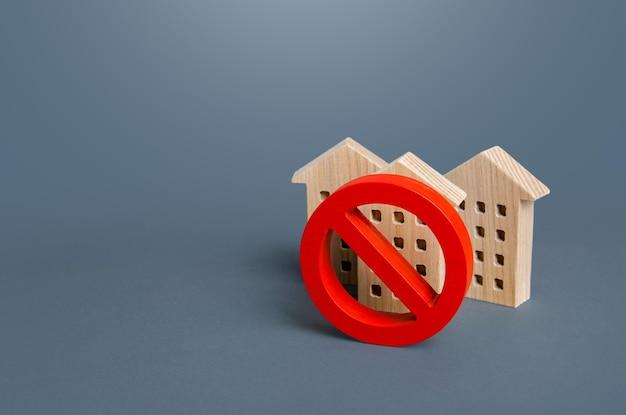India, a country known for its rich cultural heritage and diversity, has made significant progress in various fields since gaining independence in 1947. However, despite these advancements, India still grapples with the issue of underdevelopment. Underdevelopment refers to a state where a country lags behind in terms of economic growth, industrialization, healthcare, education, and other key factors that contribute to overall development.
Understanding the main causes of underdevelopment is crucial in order to address these challenges and pave the way for a brighter future. This blog post will delve into the factors that have hindered India’s progress and examine the root causes of its underdevelopment. By analyzing these issues, we can gain valuable insights into the measures that need to be taken to bridge the gap and set India on a path towards sustainable development.
In this blog post, we will explore the difference between development and underdevelopment, the classification of developed and developing countries, and specifically focus on the main causes of underdevelopment in India. Join us as we unravel the complexities surrounding this topic and shed light on the multitude of factors that have contributed to India’s current state of underdevelopment.
Stay tuned as we take a deep dive into the challenges faced by India and explore potential solutions to promote its growth and development. Let’s embark on this enlightening journey together and gain a better understanding of the underdevelopment of India.

The Deep Dive: Main Causes of India’s Underdevelopment
Corruption: The Sneaky Villain
India’s underdevelopment can be attributed to several factors, with corruption playing a prominent role. It’s like that pesky mosquito buzzing around your head, constantly interrupting progress. Corruption permeates various aspects of Indian society, from politics to business, hindering the nation’s growth. It’s akin to a game of “follow the money,” except the money seems to have a knack for disappearing.
Inefficiency: The Turtle’s Pace
India’s underdevelopment can also be attributed to its inefficiency, often compared to a turtle meandering along. Bureaucracy, red tape, and a laid-back attitude towards accomplishing goals slow down progress and hinder development. It’s like waiting in line at the grocery store behind someone who insists on price-checking every item, oblivious to the growing line of frustrated customers behind them.
Poor Infrastructure: The Bumpy Road
Lack of proper infrastructure is another major cause of underdevelopment in India. It’s like driving on a pothole-ridden road where each bump knocks the wind out of your tires. Inadequate transportation, power shortages, and limited access to basic amenities hinder economic growth and make development a bumpy ride.
Population Explosion: The Crowded Room
India’s booming population can be seen as both a blessing and a curse. The sheer number of people places a strain on resources, infrastructure, and job opportunities. It’s like being in a crowded room where each step forward is met with resistance. Providing education, healthcare, and employment opportunities to a rapidly growing population is a challenge that hinders the overall development of the nation.
Educational Disparity: The Missing Puzzle Piece
Education is often referred to as the cornerstone of development, but in India, it’s more like a missing puzzle piece. Disparities in access to quality education, particularly in rural areas, create a gap between those who have opportunities and those left behind. It’s like having a library where the books are locked away, making knowledge elusive and impeding progress.
Gender Inequality: The Shattered Glass Ceiling
Gender inequality is a prevalent issue that impedes India’s development. It’s like a glass ceiling, limiting women’s potential and preventing them from contributing fully to the nation’s growth. Discrimination, lack of opportunities, and societal norms that restrict women’s mobility hinder progress and perpetuate underdevelopment.
In Conclusion
India’s underdevelopment can be attributed to a multitude of factors, including corruption, inefficiency, poor infrastructure, population explosion, educational disparities, and gender inequality. It’s like a puzzle with several missing pieces, hindering the complete picture of progress. Addressing these issues and finding sustainable solutions is crucial for India’s path towards development and prosperity as it enters the year 2023.

FAQ: Causes of Underdevelopment in India
What is the difference between development and underdevelopment
Development refers to the process of positive growth and progress in various aspects of a country, such as the economy, infrastructure, education, healthcare, and standard of living. On the other hand, underdevelopment signifies a state where a country lags in these areas, struggling to provide the necessary resources and opportunities for its citizens to thrive.
What is underdevelopment of a country
Underdevelopment of a country refers to a situation where it falls behind in terms of economic, social, and technological advancements compared to other nations. It indicates a lack of substantial progress and the prevalence of poverty, unemployment, inadequate infrastructure, and limited access to education and healthcare.
How do we classify developed and developing countries
Countries are usually classified into three categories, namely developed, developing, and least developed. Developed countries have high standards of living, well-established infrastructure, advanced technologies, and stable economies. Developing countries, like India, are in a transitional phase, working toward achieving higher levels of development. Least developed countries face significant challenges, such as extreme poverty, weak institutions, and limited resources.
What countries are not 3rd world
The term “Third World” was originally used to refer to countries that were not aligned with either the capitalist bloc (First World) or the communist bloc (Second World) during the Cold War. In current usage, the term has evolved and is considered outdated and somewhat derogatory. Instead, we now refer to countries as developed, developing, or least developed, based on their level of progress and economic indicators.
What should I say instead of developing countries
To replace the term “developing countries,” it is better to use alternative and more accurate descriptions such as “emerging economies,” “transitioning nations,” or “countries in the process of development.” These terms recognize that these countries are on a journey toward progress and improvement rather than simply being portrayed as lacking or lagging.
What are the main causes of underdeveloped countries
There are several reasons contributing to the underdevelopment of countries. Factors like political instability, corruption, inadequate infrastructure, lack of access to quality education and healthcare, high levels of poverty, income inequality, and limited technological advancements can hinder a nation’s progress and perpetuate underdevelopment.
What are the main causes of underdevelopment in India
India, like many other developing nations, faces unique challenges on its path to development. Some of the main causes of underdevelopment in India include:
Historical Factors:
India’s colonization by foreign powers in the past had detrimental effects on its socio-economic growth. The exploitation of resources and subjugation of the native population hindered indigenous development and left a lasting impact.
overpopulation:
With a population of over 1.3 billion people, India faces the challenge of providing adequate resources, healthcare, education, and employment opportunities to its citizens. The sheer magnitude of the population puts immense strain on infrastructure, leading to underdevelopment in certain areas.
Poverty and Income Inequality:
India experiences significant levels of poverty and income inequality, with a large portion of the population living below the poverty line. This divide limits access to quality education, healthcare, and basic amenities, perpetuating underdevelopment.
Corruption:
Corruption in various sectors, including politics, bureaucracy, and business, poses a significant hurdle to India’s growth. It hampers investment, erodes public trust, and diverts resources away from development initiatives.
Inadequate Infrastructure:
India faces challenges in developing and maintaining robust infrastructure across the country. Insufficient transportation networks, inadequate power supply, and limited access to clean water and sanitation impede progress and economic growth.
Educational Disparities:
While India boasts a strong educational system in certain regions, educational disparities persist across the country. Access to quality education remains a challenge, particularly for marginalized communities, impacting their social and economic mobility.
Gender Inequality:
Gender inequality, including limited access to education, healthcare, and employment opportunities for women, hampers India’s progress. Empowering women and ensuring their participation in all aspects of society is crucial for sustainable development.
In conclusion, underdevelopment in India and other developing countries can be attributed to a complex interplay of historical factors, population pressure, poverty, corruption, inadequate infrastructure, educational disparities, and gender inequality. Addressing these challenges requires sustained efforts from the government, civil society, and international collaboration to promote inclusive growth, improve living standards, and create opportunities for all.
